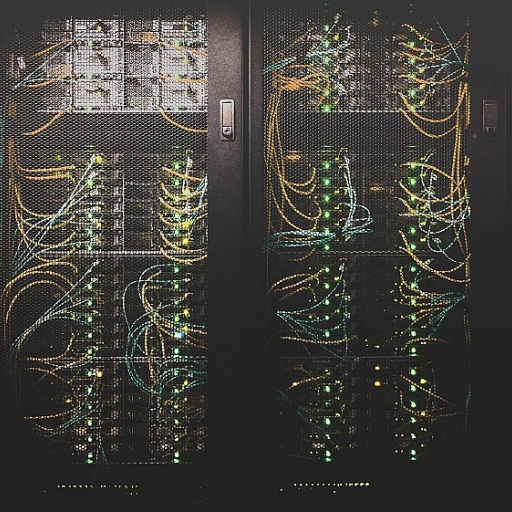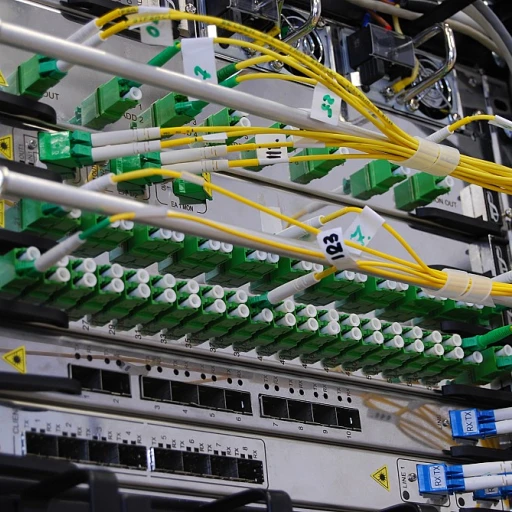
Understanding E-House Technology
Exploring the Core of E-House Technology
The concept of E-House technology is revolutionizing the way we approach electrical infrastructure. At its core, an E-House, or electrical house, is a prefabricated, modular electrical building that integrates various electrical equipment and systems. These structures are designed to house power distribution, motor control, and voltage switchgear, providing a centralized hub for electrical control systems.
E-Houses are particularly advantageous in industries such as oil and gas, where site work demands high-quality, cost-effective solutions. The modular design of these electrical buildings allows for quick installation and easy transportation, making them ideal for remote or challenging environments. This flexibility in design and installation is a significant factor driving the adoption of E-House technology in various sectors.
The Role of Design and Engineering
Design and engineering play crucial roles in the development of E-House systems. The construction of these modular electrical units requires precise engineering to ensure that all components, from low voltage to medium voltage systems, are seamlessly integrated. This integration is vital for maintaining the efficiency and reliability of power control and distribution.
Project management is another critical aspect of E-House technology. Effective project management ensures that the construction and installation processes are streamlined, reducing downtime and minimizing costs. This approach not only enhances the efficiency of the project but also ensures that the final product meets the high standards required for electrical equipment and control panels.
Business Implications and Future Outlook
As businesses continue to seek innovative solutions to meet their electrical needs, the demand for E-House technology is expected to grow. The ability to provide a comprehensive, modular solution for power distribution and control makes E-Houses an attractive option for companies looking to optimize their operations.
For those interested in the broader implications of technological advancements in the software landscape, exploring the evolution of IT in various industries can provide valuable insights. As we delve deeper into the future of software, understanding the role of E-House technology will be crucial in navigating the challenges and opportunities that lie ahead.
The Role of Artificial Intelligence in E-House Systems
Artificial Intelligence: The Brain Behind E-House Systems
Artificial Intelligence (AI) is revolutionizing the way we view and interact with E-House systems. These systems, which are essentially modular electrical buildings, are becoming increasingly sophisticated, thanks to AI's ability to enhance control and efficiency. AI algorithms are now integral in managing the power distribution and control systems within these electrical houses, ensuring optimal performance and reliability.
AI's role in E-House technology extends to various aspects, including:
- Power Control and Distribution: AI helps in the precise management of power distribution, whether it involves low voltage or medium voltage systems. This ensures that electrical equipment operates efficiently, reducing energy waste and enhancing sustainability.
- Predictive Maintenance: By analyzing data from control panels and motor control centers, AI can predict when equipment might fail, allowing for proactive maintenance. This not only reduces downtime but also extends the lifespan of the equipment, making the project more cost-effective.
- Optimizing Construction and Installation: AI aids in the design and modular construction of E-Houses, streamlining the installation process on-site. This results in high-quality, reliable systems that meet the specific needs of businesses in industries like oil and gas.
Moreover, AI enhances project management by providing real-time insights into the performance of electrical houses. This enables engineers and project managers to make informed decisions, improving the overall efficiency of the site work.
For those interested in exploring how AI is shaping other sectors, such as rail dispatch solutions, you can find more information in this innovative rail dispatch solutions for the future.
Cybersecurity Challenges in E-House Environments
Addressing Security in E-House Systems
As E-House technology continues to evolve, cybersecurity becomes a paramount concern. The integration of advanced systems such as artificial intelligence and IoT devices in electrical houses introduces new vulnerabilities that can be exploited by malicious actors. Ensuring the security of these systems is crucial to protect sensitive data and maintain operational integrity.
Challenges in Protecting Electrical Equipment
Electrical houses, often used in industries like oil and gas, rely on complex networks of electrical equipment, including voltage switchgear and motor control centers. These components are essential for power distribution and control systems. However, their interconnected nature can expose them to cyber threats. Effective cybersecurity measures must be implemented to safeguard these systems from unauthorized access and potential disruptions.
Implementing Robust Security Protocols
To mitigate cybersecurity risks, businesses must invest in high-quality security protocols. This includes regular updates to control panels and modular electrical systems to address vulnerabilities. Additionally, project management teams should prioritize cybersecurity during the design and construction phases of E-House projects. By doing so, they can ensure that security is integrated into the very fabric of the electrical buildings.
Collaborative Efforts for Enhanced Security
Collaboration between engineering teams, cybersecurity experts, and service providers is essential for creating a secure E-House environment. By working together, these stakeholders can develop comprehensive security strategies that address potential threats at every stage of the project. This collaborative approach not only enhances security but also ensures that the systems remain cost-effective and efficient.
Future Outlook on Cybersecurity in E-House Systems
As technology advances, the cybersecurity landscape will continue to evolve. It is crucial for businesses to stay informed about the latest threats and security solutions. By adopting a proactive approach to cybersecurity, companies can protect their E-House systems and maintain their competitive edge in the industry. For more insights on managing change in technology-driven environments, explore our article on navigating change management.
The Impact of IoT on E-House Development
The Transformative Influence of IoT on E-House Development
The integration of the Internet of Things (IoT) into E-House technology is reshaping the landscape of modern electrical systems. As IoT devices proliferate, they bring about a new era of connectivity and efficiency, particularly in the design and operation of electrical houses. These smart systems are not just about connecting devices; they are about creating a seamless network that enhances the functionality and reliability of power distribution and control systems.
Incorporating IoT into E-House projects allows for real-time monitoring and control of electrical equipment. This capability is crucial for optimizing power distribution, especially in environments requiring precise management of medium and low voltage systems. By leveraging IoT, businesses can achieve a more cost-effective approach to managing their electrical infrastructure, reducing downtime and improving overall efficiency.
Moreover, IoT enhances the modular design of electrical houses, making them more adaptable to various site work requirements. This flexibility is particularly beneficial in industries such as oil and gas, where the need for high-quality, reliable electrical solutions is paramount. The ability to quickly adjust and reconfigure control panels and motor control centers ensures that these systems can meet the dynamic demands of modern engineering projects.
IoT also plays a significant role in the installation and maintenance of E-House systems. With IoT-enabled devices, project management teams can have a comprehensive view of the entire electrical setup, from voltage switchgear to control centers. This holistic services view allows for proactive maintenance and swift response to any potential issues, ensuring that electrical buildings operate at peak performance.
As the construction industry continues to evolve, the integration of IoT in E-House systems will be a driving force behind innovative engineering solutions. The future of E-House technology lies in its ability to harness the power of IoT to create smarter, more efficient, and sustainable electrical systems that meet the ever-growing demands of modern infrastructure.
Sustainability and E-House Innovations
Green Innovations in E-House Design
The future of software in e-house technology is closely intertwined with sustainability. As the world shifts towards greener solutions, e-houses are no exception. These modular electrical buildings are being designed with sustainability at the forefront, integrating advanced power control systems that optimize energy usage and reduce waste.
Energy Efficiency and Power Distribution
One of the key aspects of sustainable e-house innovations is energy efficiency. By utilizing smart control panels and advanced voltage switchgear, e-houses can manage power distribution more effectively. This not only reduces the environmental impact but also lowers operational costs, making it a cost-effective solution for businesses.
Modular Construction and Installation
The modular nature of e-houses allows for more efficient construction and installation processes. This approach minimizes site work and reduces the carbon footprint associated with traditional construction methods. Modular electrical systems can be easily adapted to meet the specific needs of a project, ensuring high quality and flexibility in design.
Integration with Renewable Energy Sources
As renewable energy sources become more prevalent, e-houses are being equipped to integrate seamlessly with solar panels and wind turbines. This integration not only supports the transition to cleaner energy but also enhances the reliability and efficiency of power control systems within these electrical houses.
Engineering for a Sustainable Future
Engineering plays a crucial role in the development of sustainable e-house solutions. By focusing on innovative design and project management, engineers are able to create systems that are not only environmentally friendly but also economically viable. This approach ensures that e-houses remain a competitive option in industries such as oil and gas, where high-quality electrical equipment and motor control are essential.
Future Trends in E-House Software
Emerging Trends in E-House Software Development
As we look towards the future of software in the realm of E-House technology, several trends are set to redefine how electrical houses operate and integrate with modern infrastructure. These trends are not just about technological advancements but also about enhancing efficiency, sustainability, and adaptability in various environments.
Integration of Advanced Control Systems
One of the most significant trends is the integration of advanced control systems within E-House projects. These systems are designed to manage and optimize power distribution, ensuring that both low voltage and medium voltage requirements are met efficiently. By incorporating sophisticated motor control and voltage switchgear, E-Houses can offer high-quality power control solutions that are both cost-effective and reliable.
Modular Design and Construction
The shift towards modular design in E-House construction is another trend gaining momentum. Modular electrical buildings allow for quicker installation and easier site work, reducing project management complexities. This approach not only speeds up the construction process but also offers flexibility in design, making it easier to adapt to specific project needs and site constraints.
Sustainability and Energy Efficiency
With growing emphasis on sustainability, E-House innovations are increasingly focusing on energy-efficient solutions. By leveraging smart electrical equipment and control panels, these systems aim to minimize energy consumption while maximizing performance. This trend aligns with the broader industry move towards greener, more sustainable engineering practices.
Enhanced Cybersecurity Measures
As discussed earlier, cybersecurity remains a critical concern in E-House environments. Future developments in E-House software will likely include more robust security protocols to protect against cyber threats. This will involve the implementation of advanced encryption techniques and real-time monitoring systems to safeguard sensitive data and control systems.
Business and Industrial Applications
The application of E-House technology is expanding beyond traditional sectors like oil and gas. Businesses are increasingly adopting these systems for a variety of uses, from power distribution in industrial sites to modular electrical solutions in commercial buildings. This expansion is driven by the need for versatile, high-quality solutions that can be tailored to specific business requirements.
In conclusion, the future of E-House software is bright, with numerous innovations on the horizon. As these trends continue to evolve, they will undoubtedly shape the way electrical houses are designed, constructed, and operated, offering new opportunities for businesses and industries worldwide.





-large-teaser.webp)









